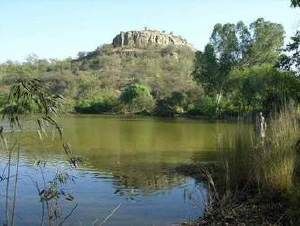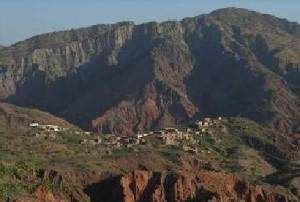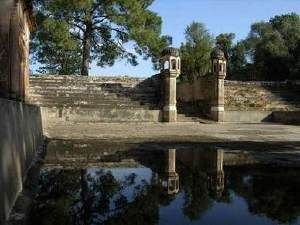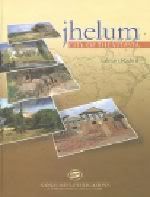Salman Rashid’s “Jhelum: City of the Vitasta� is a worthy, lively, and very well-researched book that entertains as well as informs. It richly succeeds in uncovering the truth about the name of the ancient town and smashing unfounded legends while bringing an evolution vividly to life in the process.
Where has the name Jhelum come from? Salman Rashid writes,
Local ‘historiansÃ� �€™ were assiduously applied to the task of inventing history. Sometime since the first European historian did his research in the area and the present, ‘Jhelumâ� �‚¬â„¢ had become the name of Alexander’s horse. I was surprised to discover locally printed histories carrying on and on about famous horse that dies at Jhelum and gave the town its name. All of these so called histories have been printed in the last thirty or so years which implies that this industry of pseudo-history became fashionable in the recent past.
 From ‘an ordinary village’ Jhelum city came of age during the British Raj.
From ‘an ordinary village’ Jhelum city came of age during the British Raj.
Two things are evident, One, that Jhelum never matured as a trading town, that whatever scant marchandize could be seen in its bazaars was the leavings of the limited trade transiting through here. Secondly, in the presence of the busier ferries of Jalalpur, Haranpur and, even despite its bitter ground water, Pind Dadan Khan, Jhelum was the less preferred crossing point. Indeed, at the point of annexation in 1849 by the British, the town contained only five hundred houses. That is, its population was not much above three thousand souls. A far cry from a rich and prosperous town.
Jhelum district lies on the route that was taken by all conquerors and invaders coming from the north. Journeying back and forth through history, Salman Rashid narrates the interesting tales the District has to tell from Alexander era, to Mughal period and British Raj.The book is based upon the study of history of the district and its people, which is then backed upon by field notes and incisive observations. The writer also documents the history woven around Fort Rohtas and Till Balanath (Tilla Jogi) and how important was Jehlum on the Railway Map or for the timber trade.
 Salman Rashid is a famous travel-writer of Pakistan; remember TV Serial Nagri Nagri Ghum Musafar. As a travel writer he has a talent for detail. Since 1983 when he discovered his ability to tell a tale, he has written countless articles, and has six books including Prisoner on the Bus, The Salt Range and the Potohar Plateau, Gujranwala: The Glory that Was, Riders on the Wind. Sarwat Ali once wrote of him:
Salman Rashid is a famous travel-writer of Pakistan; remember TV Serial Nagri Nagri Ghum Musafar. As a travel writer he has a talent for detail. Since 1983 when he discovered his ability to tell a tale, he has written countless articles, and has six books including Prisoner on the Bus, The Salt Range and the Potohar Plateau, Gujranwala: The Glory that Was, Riders on the Wind. Sarwat Ali once wrote of him:
He draws his inspiration from the writers of history who treated their subject as a grand denouement of a dramatic plot with historical personages as characters. He is thus far away from those academic historians who establish a thesis and then laboriously fill in data to prove their assumptions. Salman Rashid is not a historian, neither is he a social scientist; he basically loves to write about places and people with the zest and passion that is more the forte of creative writing. This strength can easily turn into a flaw, but he knows when to stop and puts an end to the surge of passion before it freewheels from the umbilical cord of history into fantasy.
 Accompanied by dozens of images, hundred of interviews with those who carry the lore (also myths and legends) and sifting heresy from what are the substantiated facts, and as a result of many visits to the dusty old record rooms, Salman Rashid’s book is much more than a history; it is a heartfelt chronicle that evokes the atmosphere of a Jhelum district that is distinctly ancient.
Accompanied by dozens of images, hundred of interviews with those who carry the lore (also myths and legends) and sifting heresy from what are the substantiated facts, and as a result of many visits to the dusty old record rooms, Salman Rashid’s book is much more than a history; it is a heartfelt chronicle that evokes the atmosphere of a Jhelum district that is distinctly ancient.
Jhelum: City of the Vitasta is a mosaic of history, archeology, geography, folklore and travelogue. The book is a must read for those searching for the answers to riddles in history. Well-written and wonderfully presented, the book belongs on the shelf of anyone interested in subcontinent history starting from Alexander’s days. I highly recommend it.
Cross Posted from Light Within




















































Salman Rasheed knows nothing about jhelum
Alexander’s Naval Chief was assigned the task of boats building on a very large scale. Therefore, the craftsmen on a large scale were gathered, hence the modern colonies in the city were named as Machine Mohallahs (Number1, 2 and 3), because of saw mills. Jhelum was a timber market for whole of Punjab over the millenniums. It was only after construction of Mangla Dam that log wood does not float down the River and the city has lost this privilege.
I wrote 4 books in urdu language
1. Sooch Ka Safar
2. Super Natural
3. Shikwah
4. Ilm-o-Hikmat kay Moti
website: http://www.geocities.com/urduadab2002/index.html
http://www.urduadab.cjb.net
http://www.saeedjafri.blogspot.com
I have been looking for a map of Jhelum District, showing small towns near Jalalpur as I was born there in the early 1930’s and now live in the U.S. Can you please suggest a source. Thanks.
Salam!
I studied your book the most part is translated from Tareekh e Jhelum written by Anjum Sultan Shahbaz but I was astonished to see that the total credit was calimed by you. You should admire the local resources but you mentioned a Zila Nazim. It was not just. I think that Tareekh E Jhelum is good book and is not written under any greed.
Dear Salman Rasheed!
You stayed for one month at jhelum and compiled the book Vally of Vitasta, it was not revealed upon you nor you made research but collected the information from Gazzetteer and Tareekh Jhelum Urdu version witch was provided by M.A shah.You didn’t pay you thank to the authors but you wrote down the word socalled for them. what was your intention sir?
you create history or explore?